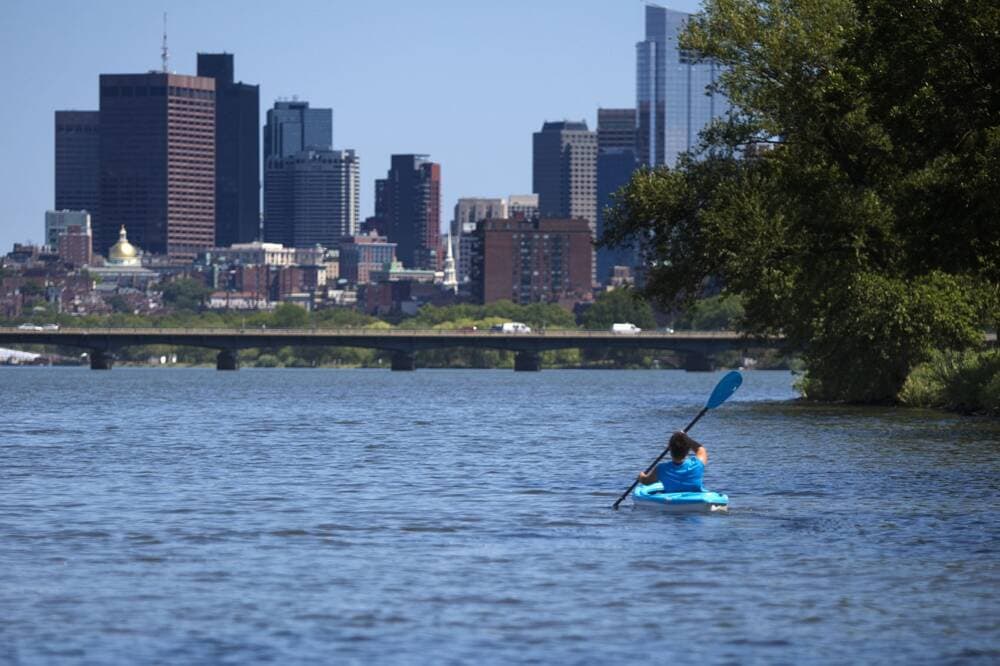Advertisement
Commentary
Does the Charles River have rights?

Does the Charles River have legal rights?
Some of the world’s rivers have been granted the same legal rights as humans, based on legal arguments rooted in traditional ecological knowledge.
Consider the Whanganui River in New Zealand. This 180-mile river, sacred to the indigenous Māori people, has suffered the abuses of pollution, overfishing, and overdevelopment since colonial times. In 2017, the New Zealand government granted the Whanganui legal personhood under the guardianship of the Māori. The river and its ecosystem can now be legally represented in court, much like how a corporation is considered a "person" in the eyes of the law.
The legal theory underpinning the "Rights of Nature" movement dates to a 1972 journal article titled "Should Trees Have Standing?" by Christopher D. Stone, an American legal scholar. Stone was the first to rigorously explore the idea of a legal framework in which things like rivers have legal rights equivalent to those of individuals.
Stone's seminal article recounted the incremental widening of personhood rights to comprise different groups — children, women, people of color — as well as nonhuman entities such as trusts, municipalities and corporations. Rights unquestioned today were regarded as outlandish at the time they were first conferred. Stone suggested that granting personhood to nature would be the continuation of a historical progression.
Personhood rights allow a plaintiff to attain standing, the legal requirement to show the defendant caused actual injury to the plaintiff. Without standing, a lawsuit goes nowhere. For example, a federal court in Georgia recently dismissed a case brought by an activist coalition against a developer who filled in a wetland because the groups that sued failed to demonstrate that the developer's action adversely affected them.
It is a paradox of environmental jurisprudence that laws created to deter harm to ecological interests require evidence of harm to humans. A watchdog organization may sue a government agency for failing to enforce a law designed to protect some natural resource, but even if the damage to the environment is evident, the court will throw out the case if the plaintiffs can't establish that they personally have suffered.
In a legal framework that embraces Rights of Nature, the hurdle of identifying a human litigant with standing goes away. A river speaks for itself.
Advertisement
This worldwide movement is gaining traction. The Rio Atrato in Colombia was granted rights to protection, conservation, maintenance and restoration by the Constitutional Court in 2016. In 2019, the High Court of Bangladesh determined that all the nation's rivers were living entities with full legal rights. In Ireland, a group is currently working through the United Nations to recognize the rights of the River Shannon, the longest river in that country.
Ecuador's extension of rights to nonhuman litigants is not limited to rivers. The nation's new constitution defines rights for mountains, forests, rivers, and their associated ecosystems. These rights have already been successfully exercised in Ecuador to force the mining industry to prove its operations don't harm ecosystems or threaten endangered species.
In the United States, the Clean Water Act and the Endangered Species Act have provided legal avenues for pivotal environmental litigation. But there is still a case to be made for the Rights of Nature movement in this country. A group in Utah, for example, is arguing for the rights of the Great Salt Lake.
The Charles River Watershed Association, an environmental nonprofit that advocates for the Charles River and its ecosystem, is working in cooperation with Indigenous individuals, including members of the Mashpee Wampanoag tribe, to study the question of how Rights of Nature might be helpful in defending the Charles and other rivers in the state.
"It would be a powerful voice for protection and stewardship of the river," said Jennifer Ryan, the Deputy Director of Advocacy at CRWA. She notes that establishing the rights of natural entities would likely require an amendment to the state constitution and follow-on legislation.
Ryan emphasizes the role of Indigenous people in leading the movement. The Europeans who colonized the Americas viewed the newfound natural bounty as wealth to be expropriated. They commodified the forests, minerals, wildlife and farmland, applying European concepts of property ownership to the riches of the new continent. Native Americans saw the world in a radically different way.
Indigenous traditions generally regard humans as part of nature, interdependent with other living beings. While Western societies tend toward domination and extraction, most Indigenous ontologies revolve around stewardship and sustainability. Rights of Nature harmonizes with this more integrated understanding of the relationship between humanity and the natural world.
"It's really about a culture shift and demonstrating that people and nature are profoundly connected," commented Ryan.
The ecological fate of the world's rivers in this century may well hinge on making that culture shift happen.
